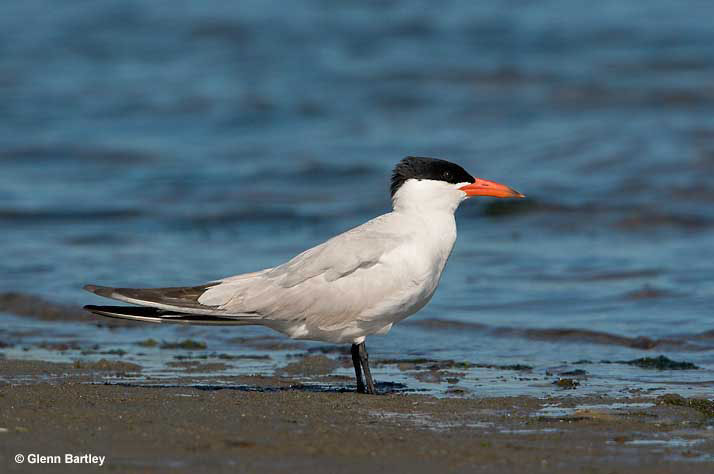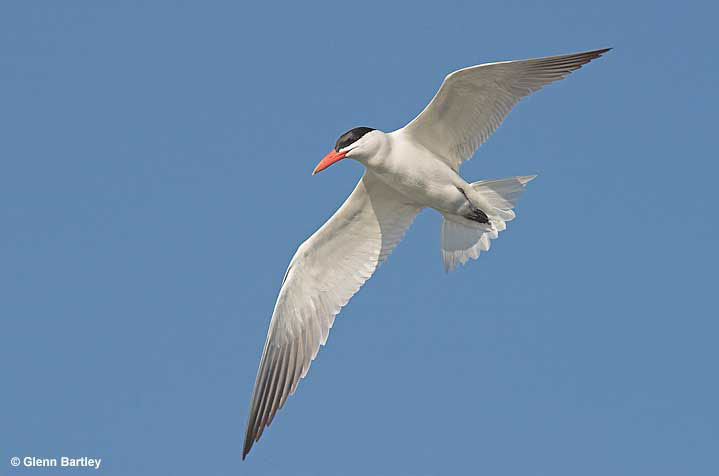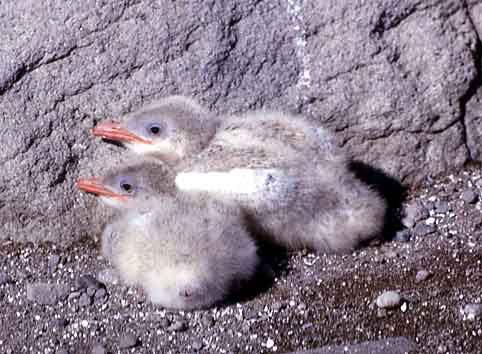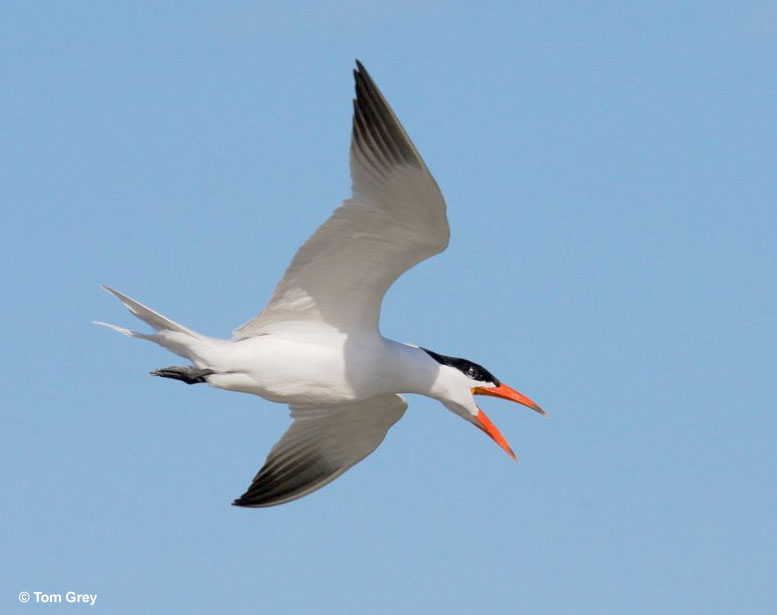Caspian Tern (Hydroprogne caspia) is the king of terns since it is the largest species of tern in the world.
With their distinctive orangish-red bills and piercing calls, these seabirds are a sight to behold as they gracefully soar above the water in search of fish.
These intelligent birds have a unique and complex social structure and play an important role in the marine ecosystem.
On this page
What Does A Caspian Tern Look Like?
An adult Caspian Tern can be easily distinguished from other birds by its white-gray plumage, a black cap on its head, and a large orangish-red bill that may have a black tip.
The upper part of its body and wings are light silvery gray, whereas the underwings are pale with blackish primary feathers. Its belly, neck, and some of its face are white. It has black, slender legs and a short tail.
Caspian Tern is the largest tern in the world, growing up to 19-24 inches in length, and has a wingspan of 50-57 inches. Both the male and female look the same.

Juvenile Caspian Terns are camouflaged in white with grayish and brownish markings on the back and wings. Instead of a black cap, their forehead is streaked with dark gray and black.
Nonbreeding adults look like a mix of adults and juveniles. The cap on their head is grayish and streaky, but they don’t have the camouflaging plumage the juveniles have.
Where Are Caspian Terns Found?
Caspian Terns range across all continents, except for Antarctica, but have a scattered distribution. In the Americas, they can be seen along coastal and inland waterways from Baja California to the Great Lakes in Canada, even as far north as southern Alaska.
When the breeding season is over, Caspian Terns migrate south to the southern coasts, northernmost South America, and West Indies.
Where Do Caspian Terns Live?
Caspian Tern’s habitats are shorelines right next to larger fresh- and saltwater systems, such as large lakes, beaches, coastal waters, lagoons, marshes, rivers, and islands.
Their nesting colonies are set up on flat and open areas that have little vegetation so they can see predators from a long distance. Their habitats are often pebbly or sandy with little and short plants.
During migration, they fly along any large freshwater body, so they can forage and rest. They don’t fly too far out over the sea.

What Do Their Nests Look Like?
These birds are monogamous and can stay together for many years. You can usually recognize a new pair by their high flight display after the male Caspian Tern has fed the female fish. Nest construction is part of their bonding.
Caspian Terns’ nests are in sandy or pebbly open areas that have little and short vegetation. The nest site is chosen and approved by both members of the pair.
The nest itself is a shallow scrape in the ground, possibly lined with debris.
The female Caspian Tern lays 1-3, rarely 4-5 pale creamy eggs that are spotted with brown or black and are 2.3-2.9 inches long and 1.6-1.9 inches wide. Both parents take turns incubating the eggs, which takes about 20-28 days.
Juveniles leave the nest a few days after hatching but remain with their parents for as long as 8 months.

What Do Caspian Terns Eat?
Caspian Terns are carnivores, feeding mostly on fish but also on insects and aquatic crustaceans. In rare cases, they have also been observed eating small birds and mammals, eggs, mussels, and snails.
They fly above shallow water that is up to 16-17 feet deep at a height of 10-100 feet, scanning for prey. When they spot it, they make a rapid dive and fully submerge in the process but sometimes just snatch it and fly onward.
They eat their prey quickly after capture unless they want to bring it to their mate or offspring. They can also chase other birds and force them to give their catch to them.
What Does A Caspian Tern Sound Like?
Adult Caspian Terns call with variations of a loud and harsh croak rrrra or rau. It can be either an alarm call or also just to keep in contact. Juveniles and females during courtship give weaker-sounding i-i-i whistles.
They also communicate via posturing and displays. When aggressive, they have ruffled feathers and raise their head up and bow forward to show the black cap.
Facts
- Caspian Terns are sometimes also recognized under the scientific names of Hydroprogne caspa and Sterna tschegrava. Currently, they are the only species in the genus Hydropronge. However, according to their molecular data, these birds should be placed in the genus Sterna.
- Caspian Tern got its name because early ornithologists associated the species with the Caspian Sea.
- The largest breeding colony is situated on a small artificial island in the Columbia River. Each year, more than 6,000 pairs go there to nest.
- The average lifespan of Caspian Terns is around 12 years, which makes the oldest who lived to be at least 32 years old quite impressive!
- Caspian Terns migrate at night, which is why you might hear their calls in the middle of the night.
Frequently Asked Questions
How did Caspian Terns get their name?
Caspian Terns were named after the Caspian Sea because early ornithologists associated them with that area. The species is still fairly common there.
Is a tern the same as a seagull?
Seagulls and terns are not the same, although they are closely related, inhabit similar places, and belong to the same family (Laridae). You can differentiate between them quite easily – terns are more streamlined and slenderer, whereas gulls are bulkier and have thicker bills that are hooked at the end.

